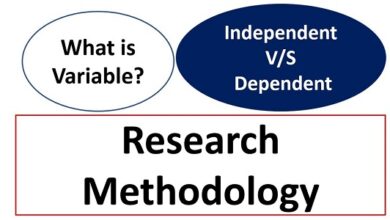What is a null hypothesis example/Formulation/Significance Tests
The null hypothesis is an assumption that is used to affirm or deny a certain event that is related to one or more parameters of a population or sample . When reaching a conclusion related to an experiment, the person doing the research must establish both the null hypothesis and the alternative hypothesis. What is a null hypothesis example?
If it refers to the null hypothesis, it is a statement contrary to the one that the researcher or person has arrived at when he tries to reject it. If you have enough evidence, you could prove that the opposite is totally true. Which means that the alternative hypothesis would be the conclusion reached by the researcher through his research.
The assertion of this hypothesis cannot be rejected, unless the data in the sample show that it is false. That is why mostly a no or an unequal a, in your statement.
What is the null hypothesis?
In statistics, a hypothesis refers to the statement of a population parameter and is represented by H0. When it comes to the null hypothesis, it means that it is the statement that two or more parameters do not have any relationship to each other. It is the starting point for a certain investigation that is not rejected unless the data is not correct. What is a null hypothesis example?
Basically it is an application in statistics of the method of reduction to the absurd, where it is assumed from the beginning, the opposite of what is wanted to prove, until the evidence or the conclusions that are acquired allow the demonstration that the starting point was false, then it would be rejected and the opposite is concluded.
Since this hypothesis has the logical formula of a universal statement, in order to confirm that it is true, it is necessary to carry out a study of the entire population.
Its term comes from the first agricultural and medical applications of statistics, this in order to state how effective new fertilizers or new drugs are. In that case, the hypothesis from where it begins shows that there was no effectiveness or difference between the samples that were treated and those that were not treated.
If it happened that the results of the sample did not support the hypothesis, then it should be rejected and the conclusion accepted and that confirms the existence of some link between the samples, would become alternative hypotheses H1. What is a null hypothesis example?
Formulation of a null and alternative hypothesis
In order to have a better understanding of the correlation between null and alternative hypotheses , an example like the following can be used:
- Assuming that a null hypothesis indicates that there is no cause and consequence relationship between a certain treatment that is being tested because it is new and the reduction of the symptoms of a disease.
- It could be said that according to the hypothesis, the new drug does not generate the expected improvement in relation to the drug that had been used so far, which means that any improvement that occurs would be a coincidence.
- In order to be able to verify and if the case were to reject this hypothesis , a scientific study would have to be carried out on the new treatment. It is discovered that there is an effective cause and consequence relationship between the new medicine and the patient’s disease improvement, it can be shown that the hypothesis is totally false.
- In the event that this occurs, an alternative hypothesis can be used, since it can be determined that the new drug has given better results than the previous one because it has shown good progress in the patient. What is a null hypothesis example?
Example of the null hypothesis
A researcher can make a postulation of a hypothesis like the following:
H 1 : When tomato plants have a higher growth rate when planted in compost than when planted in the ground.
Then the null hypothesis would be postulated as follows:
H 0 : Tomato plants do not exhibit a higher growth rate when planted in compost than when planted in the ground.
In that case it is necessary to make the selection of the null text carefully and make sure that it is very specific. The researcher, for example, can postulate a null hypothesis as follows:
H 0 : When tomato plants do not show any kind of difference in their growth rates when planted in compost instead of being planted in the ground.
- There is a defect with this last H0, since, if in reality the plants have a slower growth in the compost than in the soil, there will not be any type of exit. Which means that both H1 and H0 are not supported, due to the existence of a difference found in the growth rates.
- If the null hypothesis is rejected and there is no other option, the experiment can be said to be invalid. For this reason, science uses different deductive and inductive procedures in order to ensure that there are no errors in the hypotheses.
- Some scientists tend to neglect the null hypothesis, making the assumption that it is the complete opposite of the alternative hypothesis, however, the ideal would be that the correct time is used to form a solid hypothesis, since there is no possibility of being able to modify one hypothesis of the past, not even the H0.
Significance tests
If the significance tests allow 95% or 99% of the probabilities when the results do not adjust to the null, this will be rejected and the alternative will be favored. Otherwise, the null will be accepted.
Acceptance of the null does not mean that it can be true. Therefore, it remains a hypothesis that has to comply with the principle of falsehood, in the same way that the null rejected cannot approve the alternative.


